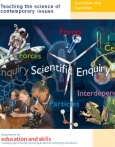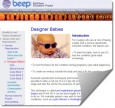Teaching approaches: Argumentation
From OER in Education
- Active learning
- Applying and consolidating
- Argumentation
- Assessment
- Classroom management
- Collaboration
- Curriculum development
- Curriculum planning
- Dialogue
- Differentiation
- Discussion
- Drama
- Exploring and noticing structure
- Games
- Group talk
- Group work
- Higher order
- Homework
- Inclusion
- Inquiry
- Introduction
- Investigation
- Language
- Learning objectives
- Mathematical thinking
- Modelling
- Narrative
- Open ended
- Planning
- Planning for interactive pedagogy
- Planning for professional development
- Posing questions and making conjectures
- Questioning
- Reasoning
- Reasoning, justifying, convincing and proof
- Scientific method
- Sharing practice
- The ORBIT Resources
- Thinking strategically
- Visualisation
- Visualising and explaining
- Whole class
- Working systematically
'Argumentation' sometimes comes with negative connotations, but teaching children how to engage dialogue skills, to reason together is an important part of learning and development. You may find that your students find it helpful to use writing frames, or other language prompts to help them, or perhaps some visualisation tools such as brainstorming or argument mapping materials. The approaches linked from this paragraph offer more detail on each aspect.
Relevant resources
| Contemporary issues | Teaching the Science of Contemporary Issues | |

|
Find lesson inspiration aplenty from news clips and stories. This longer (32 page) resource provides useful guidance, examples, and CPD activities for exploring contemporary issues in science, particularly to stimulate effective group talk(ta) and discussion(ta), and provoke pupil's interest in science.
| |
| Discussion | The Environment for Group Talk in Science | |

|
"Ask questions rather than provide answers: ‘What’s the strength of his or her point?’ ‘How you could check that out?’ " This resource contains a set of activities and examples to discuss and work through based around maintaining group talk(ta) in whole class(ta) and group work(ta) settings, including setting up Ground Rules, and creating appropriate environments (physical and 'class rule' based) for argumentation(ta) and discussion(ta)
| |
| Ethics | Designer Babies | |

|
When does life actually begin? By using an informative web tutorial, this resource aims to stimulate discussion(ta) on the ethics(topic) of modern biology. A worksheet asks students where they stand and reassures them that their response might be kept private. You might also consider using a blog, chat room or other ICT tool to record the questioning(ta) and reasoning(ta) around this topic. A teaching section offers guidance on 'teaching argument' using 'Toulmin’s model of argument' and 'The IDEAS project'.
| |

